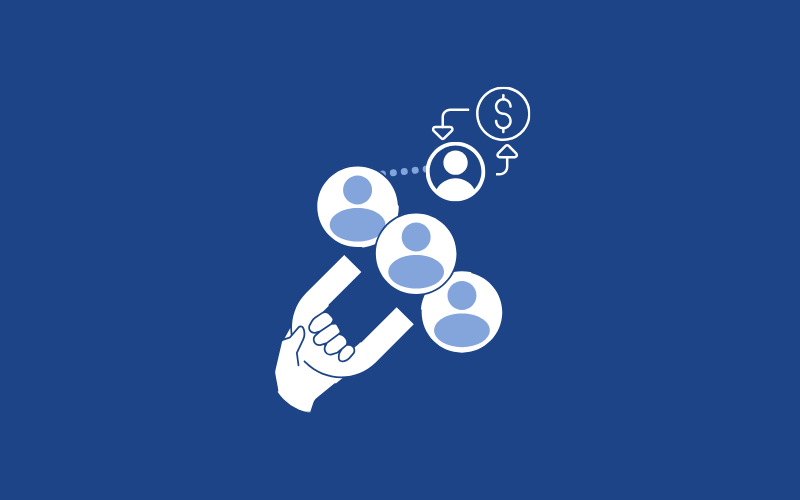In today’s competitive business landscape, understanding your customer acquisition cost (CAC) is crucial. It’s not just a number; it’s a vital metric that can make or break your business. This article will take you on a journey to explore customer acquisition cost benchmarks, helping you navigate the intricate web of CAC and make informed decisions to drive your business forward. Check out the Spechy blog for more marketing and customer experience related content.
1. Introduction
Customer Acquisition Cost (CAC) is the total cost incurred by a business to acquire a new customer over a specific time period. It’s a fundamental metric that helps businesses assess the efficiency of their marketing and sales efforts. In this article, we will delve deeper into the significance of CAC, its calculation, industry benchmarks, and strategies for optimization.
2. What is Customer Acquisition Cost (CAC)?
CAC is the monetary investment required to attract, convert, and retain a new customer. It encompasses various expenses, including marketing, advertising, sales team salaries, and technology costs. Calculating CAC provides insights into how efficiently a company is using its resources to grow its customer base.
3. Why is CAC Important?
Understanding Customer Acquisition Cost Benchmarks is essential for several reasons. Firstly, it helps in budget allocation, allowing businesses to determine how much they can spend on acquiring customers while maintaining profitability. Secondly, it aids in assessing the scalability of a business model. A high CAC might indicate difficulties in scaling, while a low CAC can signify growth potential.
4. Calculating Customer Acquisition Cost Benchmarks: The Essentials
To calculate CAC, follow this formula:
CAC = (Total Marketing and Sales Expenses) / (Number of New Customers Acquired)
This formula provides a basic understanding of CAC, but it’s essential to consider indirect costs and the time frame over which you calculate it for accuracy.
5. Industry-specific Benchmarks
Industry benchmarks are crucial to understanding whether your CAC is within a reasonable range. Benchmarks vary across sectors, so it’s vital to research and compare your CAC with industry standards. For example, the CAC in the SaaS industry differs significantly from that in e-commerce.
6. Factors Affecting Customer Acquisition Cost Benchmarks
Numerous factors can impact your CAC, such as competition, market saturation, and customer behavior. Analyzing these factors can help you make data-driven decisions to optimize your customer acquisition strategies.
7. Strategies to Optimize Customer Acquisition Cost Benchmarks
Optimizing CAC involves refining your marketing and sales processes. This may include targeting the right audience, improving conversion rates, and reducing customer churn. Implementing these strategies can lead to a lower CAC and increased profitability.
8. Tracking and Monitoring CAC
Continuous monitoring of CAC is essential. Use analytics tools and customer relationship management (CRM) systems to track your CAC over time. This data-driven approach allows you to identify trends and make necessary adjustments to your acquisition strategies.
9. CAC vs. Customer Lifetime Value (CLV)
Comparing CAC with CLV helps businesses assess the long-term sustainability of their customer acquisition efforts. A healthy ratio of CLV to CAC indicates that your business is on the right track.
10. Case Studies: CAC Success Stories
Explore real-world case studies of businesses that have successfully managed their CAC. Learn from their strategies and apply them to your own operations.
11. Common Mistakes to Avoid
Discover the most common pitfalls that businesses encounter when dealing with CAC. Avoiding these mistakes can save both time and resources.
12. Future Trends in CAC
Stay ahead of the curve by exploring emerging trends in customer acquisition cost. From AI-driven marketing to innovative advertising channels, the future of CAC is full of exciting possibilities.
13. Conclusion
In the ever-evolving business landscape, understanding and optimizing your Customer Acquisition Cost is paramount. It’s not just a metric; it’s a reflection of your business’s efficiency and growth potential. By continually monitoring and adapting your CAC strategies, you can steer your business toward success.
14. FAQs
Q1: What is a good CAC?
A good CAC varies by industry but is generally considered low if it’s less than the average customer’s lifetime value.
Q2: Can Customer Acquisition Cost Benchmarks be too low?
Yes, an exceptionally low CAC might indicate underinvestment in marketing and growth opportunities.
Q3: How often should I recalculate CAC?
It’s advisable to recalculate CAC quarterly or whenever significant changes in your marketing and sales strategies occur.
Q4: What’s the relationship between CAC and ROI?
CAC and ROI are closely linked. A lower CAC often results in a higher ROI, indicating the efficiency of your customer acquisition efforts.
Q5: Where can I find industry-specific CAC benchmarks?
You can find industry-specific CAC benchmarks through industry reports, market research, and industry associations.


